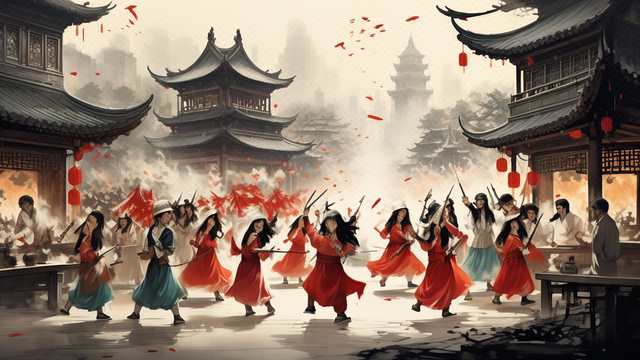
Discovering the Essence of Chinese Culture: Traditions and Customs
Introduction
China, with its rich history and diverse culture, offers a fascinating tapestry of traditions and customs that reflect the values and beliefs of its people. From ancient practices to modern celebrations, the unique aspects of Chinese culture provide insight into a society that values harmony, respect, and community. In this article, we will explore some key elements of Chinese customs and traditions that highlight the beauty of this vibrant culture.
The Significance of Family in Chinese Culture
At the heart of Chinese society lies the concept of family, which is deeply rooted in Confucian values. Family ties are paramount, and respect for elders is a cornerstone of interpersonal relationships. Reunions, particularly during the Chinese New Year, emphasize the importance of kinship, as families come together to celebrate and honor their ancestors. Traditional meals during these gatherings often feature symbolic dishes that represent prosperity and unity, such as dumplings and fish.
Festivals: A Celebration of Heritage
China is home to numerous festivals that showcase its cultural richness. Among the most celebrated is the Chinese New Year (Spring Festival), which marks the beginning of the lunar calendar. During this time, people engage in various customs, such as cleaning their homes to sweep away bad luck, decorating with red lanterns, and exchanging red envelopes (hongbao) filled with money as a gesture of good fortune.
Another notable festival is the Mid-Autumn Festival, where families gather to admire the full moon and enjoy mooncakes, a traditional pastry that symbolizes reunion. This festival reflects the deep appreciation for nature and familial bonds that are central to Chinese culture.
Traditional Arts and Crafts
Chinese culture is renowned for its traditional arts and crafts, including calligraphy, painting, and pottery. Calligraphy, considered a high art form, emphasizes the beauty of written characters and the skill of the artist. Each brushstroke is intentional, conveying emotion and meaning.
Chinese painting often captures the essence of nature, depicting landscapes, flowers, and animals in a way that reflects harmony and tranquility. Pottery, especially the famous blue-and-white porcelain, showcases intricate designs and cultural motifs that have been cherished for centuries.
Culinary Traditions: A Journey of Flavors
Chinese cuisine is as diverse as its culture, with each region boasting its own unique flavors and cooking techniques. From the spicy dishes of Sichuan to the delicate flavors of Cantonese cuisine, the culinary landscape is a reflection of regional ingredients and cultural influences.
Food holds a significant place in Chinese tradition, often symbolizing good fortune and prosperity. The preparation and sharing of food during festive occasions highlight the communal aspect of dining, fostering connections among family and friends.
The Role of Traditional Medicine
Traditional Chinese Medicine (TCM) plays an integral role in the health and wellness practices of the Chinese people. Rooted in centuries of philosophy and empirical knowledge, TCM encompasses practices such as acupuncture, herbal medicine, and qigong. These holistic approaches focus on balance and harmony within the body, addressing both physical and mental health.
Conclusion
China's rich tapestry of customs and traditions offers a captivating glimpse into the lives and values of its people. From the importance of family and the celebration of festivals to the appreciation of arts and cuisine, each element embodies the spirit of a culture that thrives on connection and harmony. As we continue to explore the world, embracing the diversity of cultures enriches our understanding of what it means to be human.
article by imageoss is licensed under CC BY-NC-ND 4.0